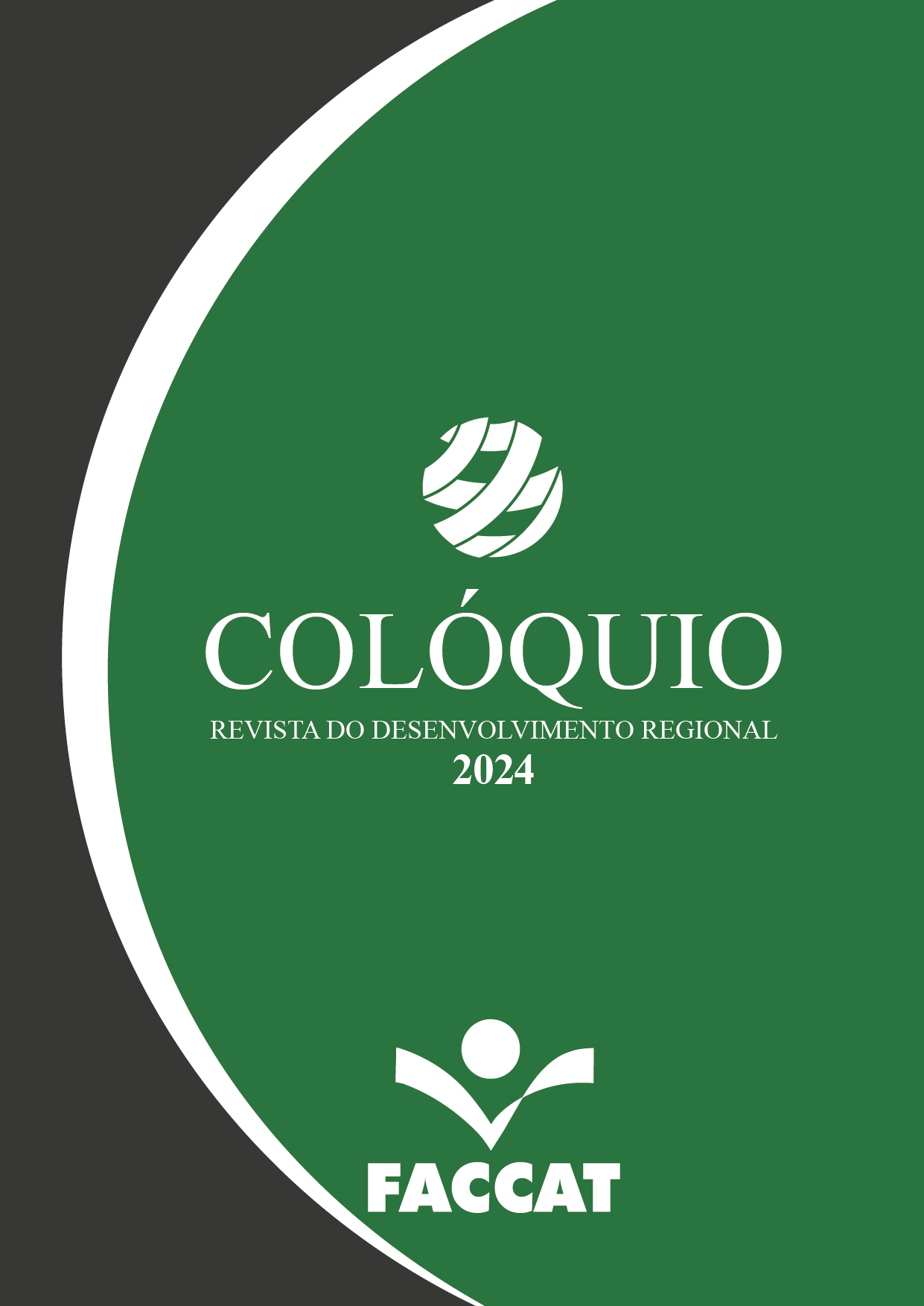Replicando modelos de impacto coletivo nos países em desenvolvimento. O modelo funciona no contexto da Amazônia brasileira?
DOI:
https://doi.org/10.26767/coloquio.212024.3234Keywords:
Collective Impact, Global South, DevelopmentAbstract
The Collective Impact Initiative (CII) model is a framework designed to address complex social issues through collaborative efforts and emergent solutions. It emphasizes the interdependence of social problems and solutions and discourages predetermined approaches. The model is based on five fundamental principles that provide a coherent set of recommendations to guide collective impact initiatives: backbone organizations, a shared agenda, shared measurement systems, mutually reinforcing activities, and ongoing communication while CII has gained global recognition and increased academic research, its potential in different contexts, such as the Brazilian Amazon, remains uncertain due to varying societal configurations and traditional collaborative models. Critiques of the model highlight its lack of specificity for individual projects, with success depending on historical relationships, differing interests, and participants' perceptions. Some authors also argue that the model oversimplifies the options, focusing primarily on Isolated Impact or Collective Impact, neglecting other community types of coalitions with broader scopes. CII is also criticized for having a top-down approach and failing to prioritize community engagement and incorporate local knowledge. Translating the CII model from the global north to the worldwide south presents challenges, including issues related to institutional capacity, legal frameworks, and governance dynamics. Maintaining long-term collaboration and securing funding in developing countries can be particularly challenging. Despite these challenges, the model's potential for addressing complex social problems remains promising, but it requires careful consideration and adaptation when applied in new contexts, especially those with unique socioeconomic and cultural attributes.
References
AMED, S., NAYLOR, P. J., PINKNEY, S., SHEA, S., MÂSSE, L. C., BERG, S., COLLET, J.- P., & HIGGINS, J. W. (2015). Creating a collective impact on childhood obesity: Lessons from the SCOPE initiative. Canada Journal of Public Health, 106(6), 426–433. Retrieved from https://doi.org/10.17269/CJPH.106.5114.
AUSTIN, J. E., & SEITANIDI, M. M. (2012). Collaborative value creation: A review of partnering between nonprofits and businesses: Part I. Value creation spectrum and collaboration stages. Nonprofit and Voluntary Sector Quarterly, 41, 726–758.
BARROS, S. M. Impacto coletivo: uma abordagem etnográfica a partir da experiência da Zona de Inovação Sustentável de Porto Alegre. 2018. Retrieved from http://www.repositorio.jesuita.org.br/handle/UNISINOS/7336.
BATIE, S. S. (2008). Wicked problems and applied economics. American Journal of Agricultural Economics, 90, 1176–1191.
BRADLEY, K., CHIBBER, K. S., COZIER, N., MEULEN, P. V., & AYRES-GRIFFIN, C. (2017). Building healthy start grantees’ capacity to achieve collective impact: Lessons from the field. Maternal and Child Health Journal, 21, 32–39. Retrieved from https://doi.org/10.1007/s10995-017-2373-1.
BROWN, F., KANIA, J., & KRAMER, M. (2012). Channeling change: Making collective impact work. Stanford Social Innovation Review, 1–9. Retrieved from https://www.keywestchamber.org/uploads/4/6/5/2/46520599/channeling_change_pdf-ssi-article-2012.pdf.
CABAJ, M., & WEAVER, L. (2016). Collecting Impact 3.0: Uma estrutura em evolução para a mudança da comunidade. Mudança na Comunidade, 1–14. Instituto Tamarack. Retrieved from https://www.collectiveimpactforum.org/sites/default/files/collective%20Impact%203.0.pdf.
CAMARINHA-MATOS, L. M., AFSARMANESH, H. (Eds). Collaborative Networks: reference modeling. New York: Springer, 2008.
CAMARINHA-MATOS, L. M.; AFSARMANESH, H.; OLLUS, M. Ecolead: a Holistic Approach to Creation and Management of Dynamic Virtual Organizations. Collaborative Networks and their Breeding Environments. New York: Springer, 2005.
CHITUC, C-M.; AZEVEDO, A. L. Multi-Perspective Challenges on Collaborative Networks Business Environment. Collaborative Networks and their Breeding Environments. New York: Springer, 2005.
CHRISTENS, B.D.; INZEO, P.T. (2015). Widening the view: Situating collective impact among frameworks for community-led change. Community Development, 46(4), 420–435. Retrieved from http://dx.doi.org/10.1080/15575330.2015.1061680.
COSLOVSKY, S. O que falta para a Amazônia dominar o mercado internacional de produtos da floresta? Coluna Opinião. Plenamata. 2022. Retrieved from https://plenamata.eco/tag/conservacao/.
DOH, J., TASHMAN, P.; BENISCHKE, M. H. (2019). Adapting to grand environmental challenges through collective entrepreneurship. Academy of Management Perspectives, 33, 450–468.
DUBOW, W.; HUG, S.; SERAFINI, B.; LITZLER, E. (2018). Expanding our understanding of backbone organizations in collective impact initiatives. Community Development, 49(3), 256–273. Retrieved from https://doi.org/10.1080/15575330.2018.1458744.
ENNIS, G.; & TOFA, M. (2019): Collective Impact: A Review of the Peer-reviewed Research, Australian Social Work. Retrieved from https://doi.org/10.1080/0312407X.2019.1602662.
ENRIQUÉZ, M. A. R. S.; FERNANDES, F. R. C.; ALAMINO, R. C. J. A mineração das grandes minas e as dimensões da sustentabilidade. Recursos minerais e sustentabilidade territorial. v. 1, Grandes minas. Rio de Janeiro: CETEM/MCTI, 2011.
FARIAS, C. E. G.; COELHO, J. M. Mineração e meio ambiente no Brasil. Relatório CGEE/PNUD. 2002. Retrieved from www.cgee.org.br.
FINCH, F. E. (1977 July). Collaborative leadership in work settings. Journal of Applied Behavioral Science 13 (3), 292-302. Retrieved from https://doi.org/10.1177/002188637701300305.
HANLEYBROWN, F.; KANIA, J.; KRAMER, M. (2012). Channeling Change: Making Collective Impact Work. Stanford Social Innovation Review, 1–9. Retrieved from https://www.keywestchamber.org/uploads/4/6/5/2/46520599/channeling_change_pdf-ssi-article-2012.pdf.
HIMMELMAN, A. T., BERKOWITZ, B. D., CHRISTENS, B., BUTTERFOSS, F., LEE, K. S., MINKLER, M. (2017). Collaborating for equity and justice: Moving beyond collective impact. Nonprofit Quarterly. Retrieved from nonprofitquarterly.org/2017/01/09/collaborating-equity-justice-moving-beyond-collective-impact/.
HOLLAND, T. Collective Impact. Camping Magazine. January/February 2016.
IRBY, M.; BOYLE, P. Aligning Collective Impact initiatives. Stanford Social Innovation Review, v. 12, p 15-16, 2014.
KANIA, J.; HANLEYBROWN, F.; SPLANSKY JUSTER, J. Essential mindset shifts for collective impact. Stanford Social Innovation Review, v. 12, p 2-5, 2014.
KANIA, J.; KRAMER, M. (2011). Collective Impact. Stanford Social Innovation Review. DOI: 10.48558/5900-kn19.
KANIA, J.; KRAMER, M. (2015). The equity imperative in collective impact. Stanford Social Innovation Review, October. Retrieved from https://ssir.org/articles/entry/the_equity_imperative_in_collective_impact.
KARP, M.; LUNDY-WAGNER, V. Theory versus Reality: Corridors of College Success Series. CCRC Research Brief. N. 61, 2016.
KOCH, P. (2013). Bringing power back in Collective and distributive forms of power in public participation. Urban Studies, 50(14), 2976–2992. Retrieved from https://doi.org/10.1177/0042098013482511.
LEFF, E. Saber Ambiental: Sustentabilidade, racionalidade, complexidade, poder. Petrópolis: Vozes. 1999.
MALHOTRA, N.; ARRILLAGA-ANDREESSEN, L.; STARKEY, K.; MEEHAN, B.; BREST, P. & HONIGSBERG, C.; CLAVIER, B.; BANNICK, M.; DAVIS, S.; LEE, L.; COULSON, S.; URSTEIN, R.; SINGER, S.; MEMET, S.; KOTHARI, S.; BLOOM, G.; COMELLO, S. D.; REICHELSTEIN, J. e REICHELSTEIN S. J. Frontiers in Social Innovation: The essential handbook for creating, deploying, and sustaining creative solutions to systemic problems. Harvard Business Press Chapters. 2022.
MENDIS, R.; DECKER, S. Acceptance of the Collective Impact Initiative Model in Rural Communities: Case Study Example - Gros Morne, NL. Journal of Rural and Community Development, 17, 1 (2022) 131–152.
MICHAELIS. Dicionário online. 2022. Available in <https://michaelis.uol.com.br/moderno-portugues/busca/portugues-brasileiro.
MILLESEN, J. (2015). Understanding collective impact in a rural funding collaborative: Collective grantmaking in Appalachian Ohio. Foundation Review, 7(4), 128–154. Retrieved from https://doi:10.9707/194456601271.
MINTZBERG, H. Crafting Strategy. Harvard Business Review, 1987.
MIRANDA, N. B. G. Instrumentos para participação comunitária. In: WWF-BRASIL; IPÊ – Instituto de Pesquisas Ecológicas. Gestão de unidades de conservação: compartilhando uma experiência de capacitação. Brasília: WWF-Brasil, p. 239-250, 2012. Available in https://d3nehc6yl9qzo4.cloudfront.net/downloads/gestao_de_unidades_de_conservacao.pdf.
MOORE, T., MCDONALD, M., MCHUGH-DILLON, H., & WEST, S. (2016). Community engagement: A key strategy for improving outcomes for Australian families. Melbourne: Child Family Community Exchange, Australian Institute of Family Studies. Retrieved from https://aifs.gov.au/resources/practice-guides/collective-impact-evidence-and-implications-practice.
MULGAN, G.; TUCKER, S.; ALI, R.; SANDERS, B. (2007). Social innovation: what it is, why it matters and how it can be accelerated. London: The Young Foundation. Retrieved from http://www.youngfoundation.org/files/images/03_07_What_it_is__SAID_.pdf.
MURRAY, R.; CAULIER-GRICE, J.; MULGAN, G. (2010); The Open Book of Social Innovation. London, NESTA/The Young Foundation. Retrieved from www.nesta.org.uk/publications/assets/features/the_open_book_of_social_innovation.
NORRIS, T. Healthy Communities at Twenty-Five. Participatory Democracy and the Prospect for American Renewal. National Civic Review. 2013.
OCDE. Transforming innovation to address social challenges. OECD Headquarters, Paris. OECD/CFE/LEED. 2009. Retrieved from https://www.oecd.org/sti/inno/44076387.pdf.
PEDERSEN, E. R. G., LÜDEKE-FREUND, F., HENRIQUES, I., SEITANIDI, M. M. Toward Collaborative Cross-Sector Business Models for Sustainability. 2020. Business & Society 1–20 Retrieved from https://doi.org/10.1177/0007650320959027.
PRANGE, K.; ALLEN, J. A.; REITER-PALMON, R. Collective Impact versus Collaboration. Sides of the same coin or different phenomenon? Metropolitan University, v.27, n.1, p. 86-96, 2016.
PURDY, J.M. (2012). A framework for assessing power in collaborative governance processes. Public Administration Review, 72, 409–417. Retrieved from http://dx.doi.org/10.1111/j.1540-6210.2011.02525.
RITTEL, H. W. J., & WEBBER, M. M. (1973). Dilemmas in a general theory of planning. Policy Sciences, 4, 155–169.
SEITANIDI, M. M., & CRANE, A. Implementing CSR through partnerships: Understanding the selection, design and institutionalization of nonprofit-business partnerships. 2009. Journal of Business Ethics, 85, 413–429.
SENGE, P.; HAMILTON, H.; KANIA, J. The dawn of system leadership. Stanford Social Innovation Review. 2015. Retrieved from https://www.ssireview.org.
SHARFMAN, M. P.; GRAY, B.; YAN, A. (1991 June). The context of inter-organizational collaboration in the garment industry: An institutional perspective. Journal of Applied Behavioral Science 27 (2), 181- 208. Retrieved from https://doi.org/10.1177/0021886391272003.
TENÓRIO, F. G. (Re)Visitando o conceito de gestão social. In: Silva Jr, Jeová; Mâsih, Rogerio (Orgs.). Gestão social: práticas em debate, teorias em construção. Fortaleza: Imprensa Universitária, 2008.
TURNER, S.; MERCHANT, K.; KANIA, J.; MARTIN, E. (2012). Understanding the Value of Backbone Organizations in Collective Impact. Stanford Social Innovation Review. Retrieved from https://www.ssireview.org.
WESTLEY, F.; ANTADZE, N. (2010). Making a difference: Strategies for scaling social innovation for greater impact. The Innovation Journal: The Public Sector Innovation Journal, 15(2), 1–19.
WOLFF, T. (2010). The power of collaborative solutions: Six principles and effective tools for building healthy communities. San Francisco: Jossey-Bass.
WOLFF, T. (2013). Ten places where collective impact gets it wrong. Global Journal of Community Psychology Practice, 7(1), pages 1-11.
WOOD, D. J.; GRAY, B. (1991). Toward a comprehensive theory of collaboration. Journal of Applied Behavioral Science 27: 139-162. Retrieved from https://doi.org/10.1177/0021886391272001.












